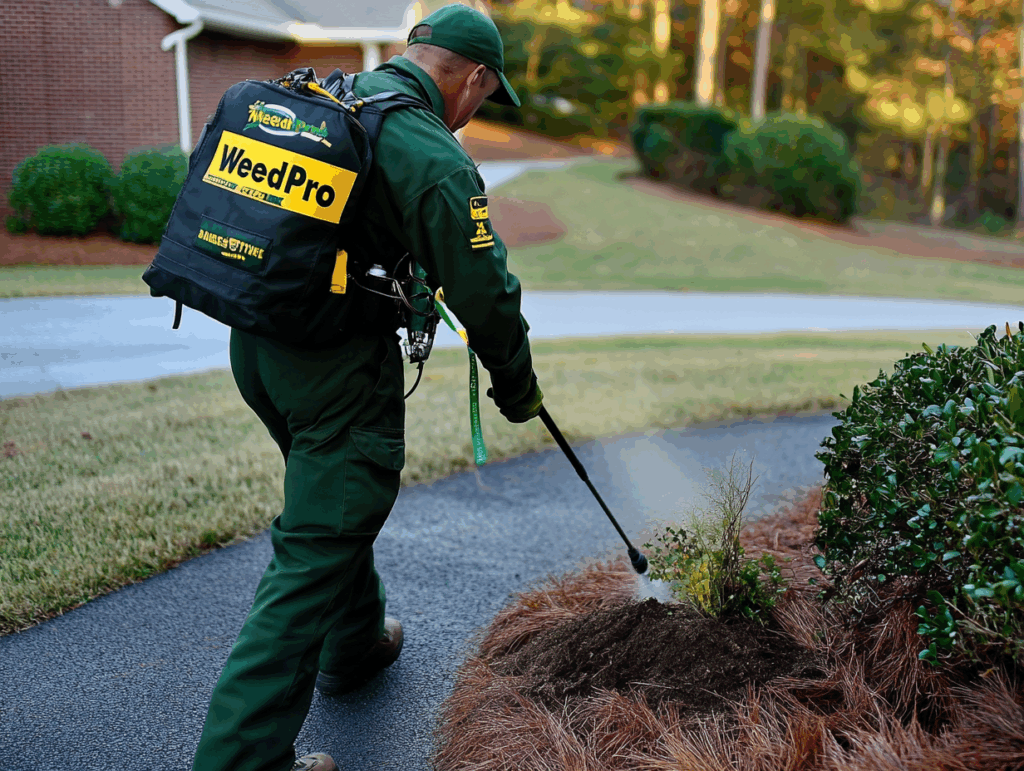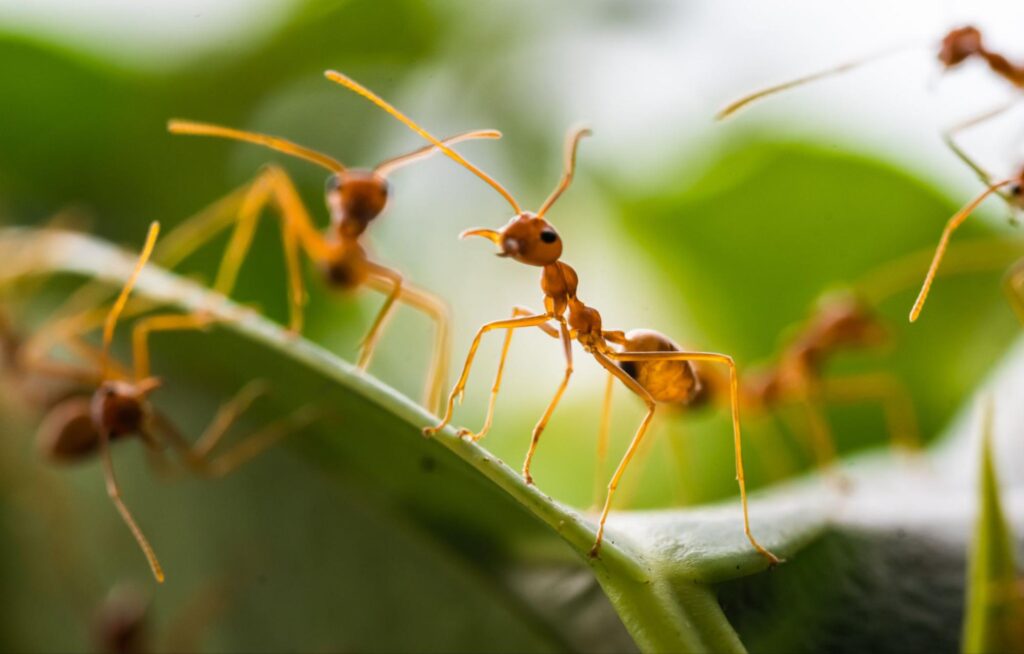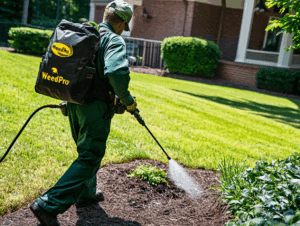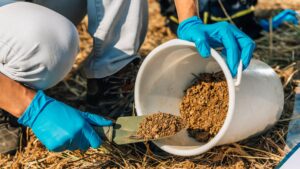Fire ants can quickly ruin the mood in your sunny yard by turning it into a painful minefield. Many homeowners in Atlanta use DIY baits to combat fire ants, and this article features five highly effective homemade fire ant baits. We will also discuss why home remedies are unlikely to eliminate a fire ant colony, provide you with necessary pet-safe precautions, and let you know when to call WeedPro for expert assistance.
Why Is DIY Fire Ant Control a Tall Order?
To combat fire ants yourself, you’ll be dealing with nesting systems that are situated deeper and more structurally complex than you might be expecting, with adult ants putting their life on the line to defend the queen and her young. The deep tunneling systems are designed to protect the queen, and they essentially act as a backup program, which hinders any above-ground approach to achieve success in elimination or control. Thus, even if you kill all the foragers, which is awfully difficult, the rest of the nest is likely to survive, as it re-constitutes inside the “colony”.
How Does the Fire Ant Nest Structure Leave You Exposed?
The entire colony is dependent on a single, fertile queen, who resides deep in the nest and continuously lays new worker ants. As long as you do not kill the queen, the colony will be able to survive. Understanding this hierarchical order of nest structure helps you realize why anything that only kills nest insects above ground cannot guarantee complete removal of the nest.
What Limits Homemade Fire Ant Baits?
Homemade baits, as previously discussed, might only attract a fraction of the worker ants that you need, and they often use fast-acting poisons to be effective, whereas at least one of the ants must have time to take some poison back to the queen. Without these insects being able to reach the queen or without sufficient bait supply, you are essentially powerless and guaranteeing yourself a complete reinvestation.
The Top DIY Fire Ant Bait Recipes Revealed
Several common household ingredients can be transformed into effective attractants and slow-acting insecticides for fire ants. The table below breaks down key DIY recipes, their main ingredient, and how they take down ants:
| Recipe | Key Ingredient | How It Works |
|---|---|---|
| Baking Soda & Sugar Bait | Baking Soda + Sugar | Creates gas inside the ant’s gut |
| Vinegar & Dish Soap Spray | Vinegar + Dish Soap | Damages exoskeleton, disrupts scent trails |
| Citrus Oil (d-Limonene) Drench | D-Limonene (Citrus Oil) | Natural nerve agent |
| Diatomaceous Earth Application | Diatomaceous Earth | Causes fatal dehydration by abrading exoskeleton |
| Borax & Sweetener Bait | Borax + Sweetener | Slow-acting stomach poison |
Each of these methods uses a different chemical or physical process to weaken the worker ants, but the queens, safely nestled deep underground, often escape these home remedies.
Whipping Up Your Baking Soda & Sugar Fire Ant Bait
Combine equal parts baking soda and granulated sugar into a shallow dish. Set the mixture out near active fire ant mounds. The ants will consume the sugar, and simultaneously, the baking soda will interact with their stomach fluids (acid), producing carbon dioxide and causing the ants to perish. It should be noted that you are targeting the foragers, not often the queen.”
How the Vinegar & Dish Soap Spray Kills Fire Ants
“Pour one cup of white vinegar (the higher percentage, the more effective) and a few drops of dish soap into a spray bottle.” Mist ant trails and the entrances to their mounds lightly. The soap removes the ants’ waxy exoskeletons, and the vinegar disrupts their scent trails, leaving them confused and unable to work together.
Your Citrus Oil (D-Limonene) Drench Guide for Fire Ants
Mix one ounce of d-limonene (citrus-based) in a gallon of warm water. Then pour directly into each fire ant mound. This essential oil drains down into the tunneling system of the mound and acts as a natural neurotoxin, with a fast-acting purpose to stop the ants when they come into contact with the liquid, providing a great natural solution to drench mounds.
Diatomaceous Earth to Treat Fire Ants
You can create a light barrier of food-grade diatomaceous earth around and over your fire ant mounds. This fine powder, once the ants pass through, acts as microscopic shards and scrapes the cuticle, resulting in fatal dehydration. You will want to reapply the diatomaceous earth after rain or heavy dew, so that it remains in an abrasive action.
How to Make the Borax & Sweetener Bait Recipe
Dissolve two tablespoons of borax into one cup of sugar water. Cotton balls soaked in this mixture, or use small shallow containers with your bait. Worker ants will carry this sweet yet deadly poison back to the nest, eventually killing the larvae and adults. It can take several days for the queen to be affected.
DIY Fire Ant Treatments: How Safe are These for Pets and Kids?
The safety of common DIY ingredients can range significantly. Some ingredients can be safer, while others, less common, can pose hidden dangers to your pets, children, and even plants. The goal is to select the right ingredients and apply them in a manner that minimizes unintended harm.
Which DIY ingredients are safe for your sweet little pets and kids?
- Baking soda/sugar: Generally low toxicity if they ingest a small amount by accident.
- Diatomaceous earth: Non-toxic physical desiccant (use food-grade).
- Citrus oil drench: Comes from the earth and hardly passes residual toxicity.
These three ingredients are the least likely to cause any harm if you can’t keep them out of reach.
What Dangers are Associated with Hot Water, Borax, or Vinegar?
- Boiling water: Could kill the roots of turf and cause burns to your precious kids/pets.
- Borax: Toxic amount consumed could be harmful when ingested by pets or wildlife.
- Highly concentrated vinegar: It could harm plants that are sensitive to vinegar and change the soil pH.
What are the Benefits of Professional Fire Ant Treatments?
Trained/certified technicians utilize advanced baits, such as TopChoice or Advion. These baits will deliver year-long control by eliminating every member of the colony. This has proven to be effective and long-lasting.
Make Your DIY Fire Ant Strategy Work

If you’re tired of guessing which fire ant bait works best, Weed Pro has you covered. We’ve spent years testing and perfecting DIY strategies that actually deliver. From choosing the right bait to timing your applications for maximum effect, our experts can teach you the secrets behind professional results—or simply handle it for you. With our guidance, you’ll spend less time battling ants and more time enjoying your lawn.
👉 Contact us today to learn which bait fits your yard’s unique needs and get pro tips for fire ant prevention.
❓ FAQ
How often should you apply DIY fire ant bait?
Most baits are most effective when reapplied every 3–6 months, but the timing depends on weather conditions and ant activity.
Can you mix different baits for faster results?
It’s not recommended; different active ingredients can reduce effectiveness or cause ants to avoid bait altogether.
Do baits work in rainy weather?
Baits are most effective on dry days. Rain can wash them away or dilute their potency.
🔗 Up Next:
Explore our next article: “Unmasking Atlanta’s Fire Ants: Your Go-To Guide for Spotting and Tackling Local Invaders“







